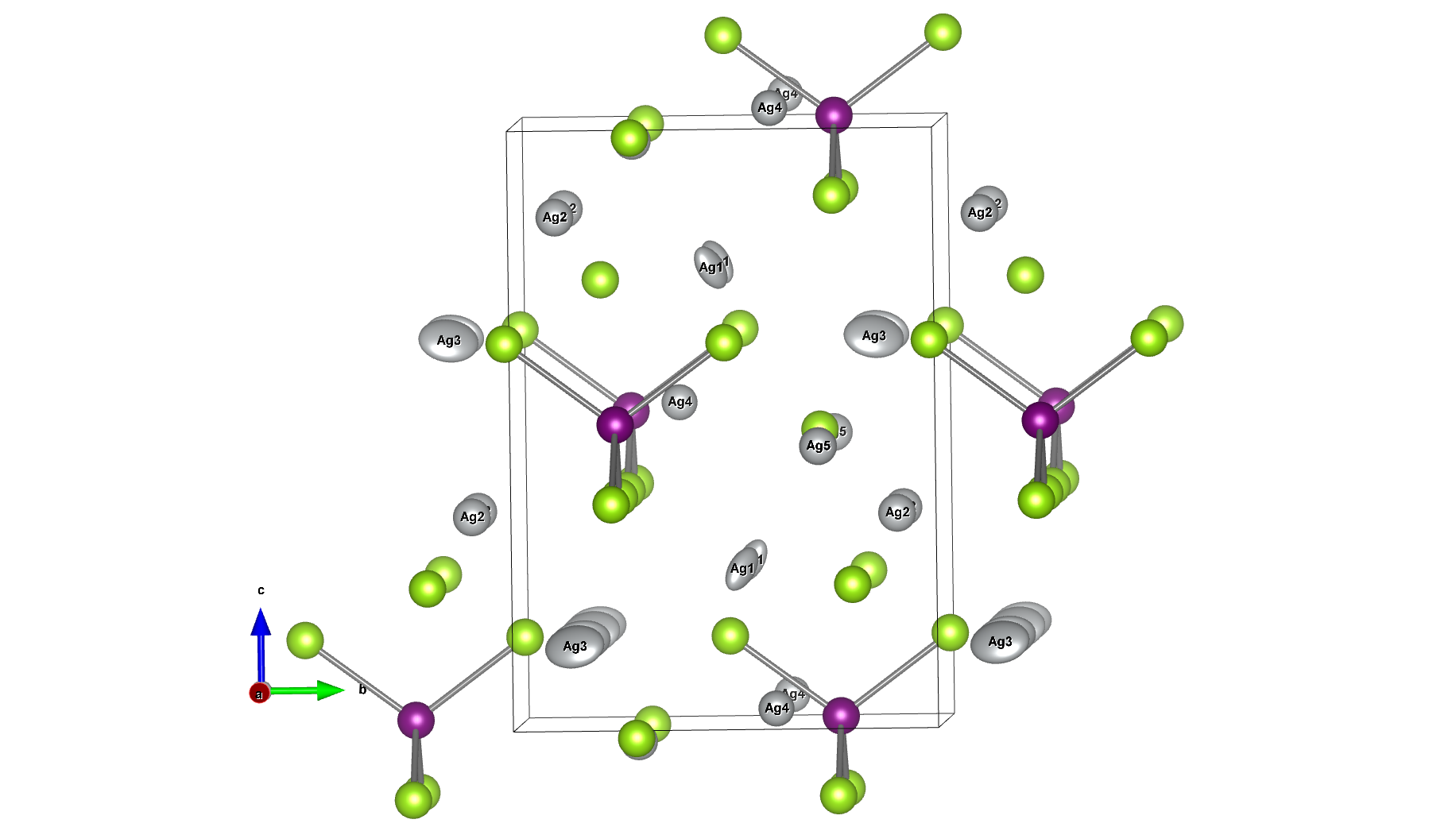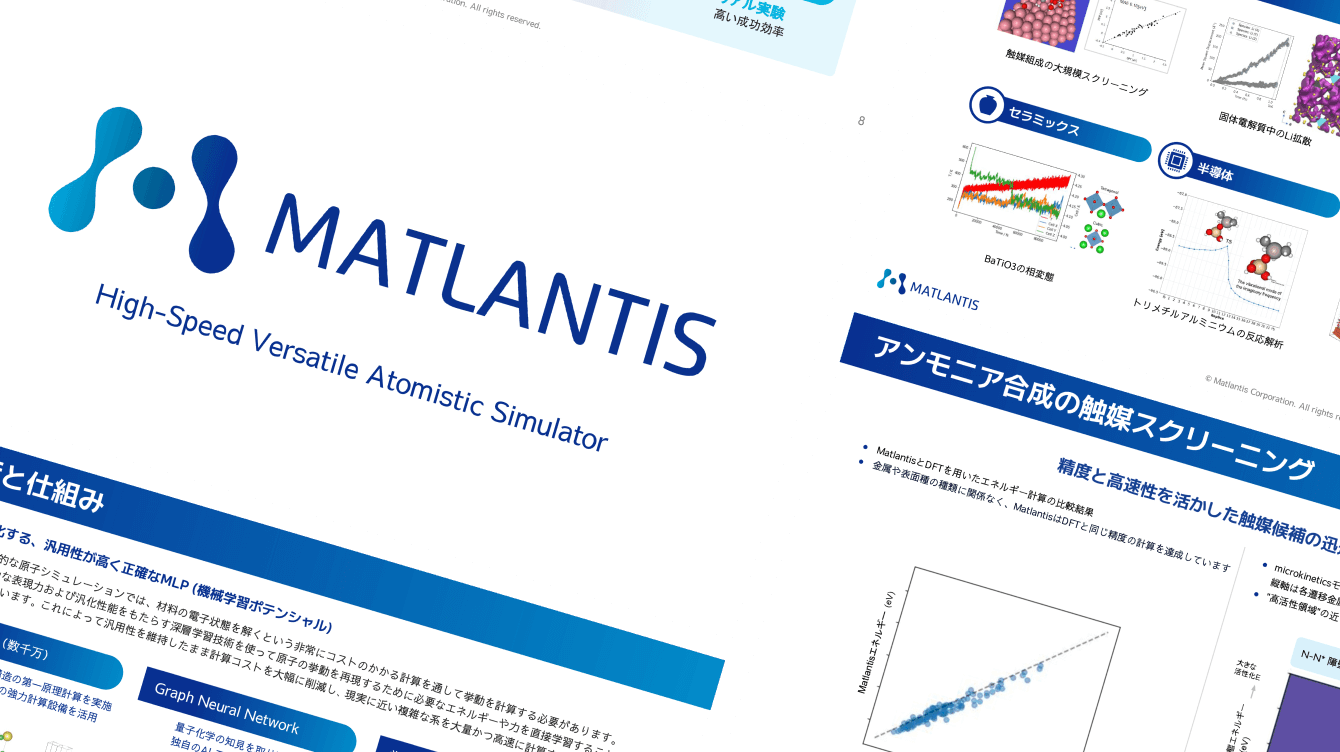Cases
We've highlighted some of the most notable examples from user interviews, simulation cases, and research papers. Browse by category to explore the details that interest you.
Featured Cases
Featured Customer Stories
It was impossible to predict based on past experience or intuition.
Creating new combinations and encounters
Kuraray Co., Ltd.Chemical
Combined with AI and experimental data, computational chemistry contributes to raising the level of research and development. “We expect that it can be a powerful tool to compete globally.”
Learn More
From left to right: Dr. Kamata, Senior Manager of the Planning and Administration Department And Digital Solution Department, Research and Development Division, Mr. Sugoh, General Manager of the Research and Development Division, and Dr. Miura, Manager of the Digital Solution Department established within the Research and Development Division
Featured Calculation Examples
NNP-MDによる原子変位パラメータの直接導出
原子変位パラメータ
熱電材料
テーマ概要 結晶構造解析では、原子の熱振動や位置の揺らぎを表す原子変位パラメータ(ADP)が重要な役割を果たします。従来は格子力学計算により求められてきましたが、置換不規則性や分裂サイトを含む複雑な結晶では適用が難しいという課題があり
Learn More
Featured Published Papers
Unveiling Dominant Processes of Na Cluster Formation and Na-Ion Diffusion in Hard Carbon Nano-Pore: A DFT-MD Study
Papers using Matlantis
Materials Informatics
battery
The pore filling by Na cluster formation in designated hard carbon (HC) anodes has been reported as a major origin of the extended plateau capacity for Na-ion battery. However, there is a lack of thorough insight into the mechanism of Na cluster formation. Furthermore, the factors causing sluggish Na-ion diffusion in HC are still unclear. In this work, these issues are addressed using density-functional-theory-based molecular dynamics with two parallel/distorted graphene sheets as models for the HC nano-pores and graphitic regions. The calculations demon…
Search for cases by category
List of customer cases
We will introduce the background, challenges, usage methods, and results obtained by companies that have introduced Matlantis. Through real voices from the field, we will provide you with hints that will be useful when considering introducing Matlantis.
List of calculation examples
We will introduce specific simulation examples using Matlantis for various material systems. You can see how high speed and high accuracy calculations are achieved.
List of published papers
This site mainly features papers published by Matlantis users about research using Matlantis, as well as papers about machine learning potential and PFP, which are core technologies of Matlantis.
How to cite
For information on how to cite Matlantis papers and case studies, please see the link below.
Beyond Human Intuition — with Matlantis
Matlantis
Portable Guide
Everything You Need to Know — Features, Benefits, and More
